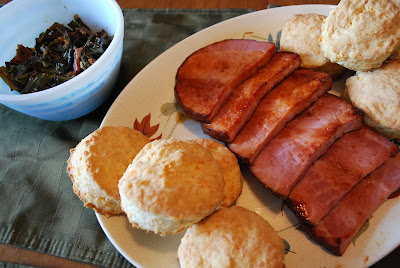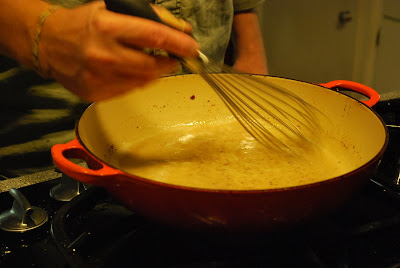 California's diverse population and agricultural legacy make it difficult to create just one meal that is representative. "California Cuisine" blends Mexican and Asian flavors with abundant seafood. And, don't forget that the first McDonald's restaurant was also in California! We ultimately decided on sushi. Wikipedia (I know, I know) claims that the progressive food culture in Los Angeles was instrumental in introducing sushi to American audiences.
California's diverse population and agricultural legacy make it difficult to create just one meal that is representative. "California Cuisine" blends Mexican and Asian flavors with abundant seafood. And, don't forget that the first McDonald's restaurant was also in California! We ultimately decided on sushi. Wikipedia (I know, I know) claims that the progressive food culture in Los Angeles was instrumental in introducing sushi to American audiences.Both kids like sushi already, but we had not "rolled our own" since long before they were born. On the side we made miso soup, which Lucy had specifically requested, and strawberries, which Lucy suggested after learning from Fruit Ninja (I wish I was kidding, but I'm not) that California produces a lot of strawberries.
Most of our sushi rolls were vegetarian, but we did pick up about 6 ounces of fresh salmon as well.

For the sushi rice, I used a recipe from Tyler Florence:
4 cups white sushi rice
4 1/2 cups water
1/2 cup rice vinegar
2 T sugar
2 tsp salt
Combine the rice and water in a rice cooker and let it do its thing. Combine the vinegar, sugar and salt in a small saucepan and heat over medium heat until the sugar dissolves.
When the rice is done, spread it onto a sheet pan and drizzle with the vinegar mixture. Gently blend the vinegar into the rice. Cover with a clean, damp towel and leave at room temperature until you're ready to use it.
Aside from the salmon, I cut thin strips of carrot, cucumber, sweet red pepper, avocado and scallion to use in the rolls. Rolling was an all-hands-on-deck event:


The miso soup recipe comes from Diana Shaw's Essential Vegetarian Cookbook:
3 cups water
6 scallions, including greens, chopped
6 dried shitake mushrooms
6 thin slices fresh ginger
1 large carrot, peeled and sliced thin
2 T yellow or red miso
1/2 cup cubed firm tofu
Put the water in a saucepan and add 3/4 of the scallions, reserving the rest. Add the mushrooms, ginger and carrot. Simmer for about 30 minutes, or until the vegetables are soft.
Strain the broth. If desired, slice and reserve the mushrooms. Heat broth over medium low heat and add the miso, tofu, and (if you like) the sliced mushrooms. Heat the soup, but do not allow it to boil.
After all of this was assembled, a nice California Sauvignon Blanc was a welcome treat!

Both girls liked the sushi, though they avoided the rolls with avocado. Neither had tried the soup before. Lucy was adamant that we prepare it, but (as in the past) she did not like the final product. Maia liked the soup, particularly the bites with either tofu or onion. When she got down to just broth, she said it was a bit bland. Marc and I enjoyed this meal and felt so virtuously healthy that we experienced not the least bit of guilt as we finished off that bottle of California wine.
Next stop: Nevada



























